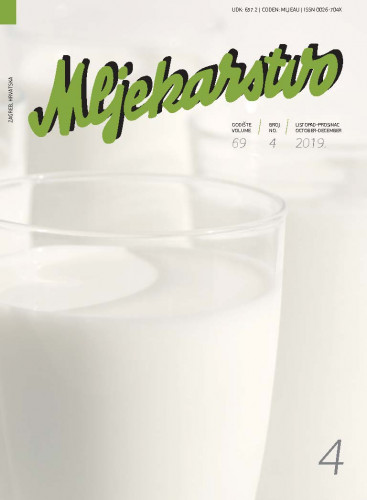In this study the physicochemical, microbiological, and fatty acid compositions together with the specific esterase activities of semi-hard goat cheeses made from native strains as starter and adjunct cultures were evaluated and compared against those of manufactured using commercial culture cheeses. The physicochemical composition was similar among cheeses, while the lactic acid bacteria were the predominant microbiota in all samples. The highest specific esterase activities were detected in cheeses with native strains. The fatty acid profile was significantly affected by native strains during the ripening time (60 days) since the conjugated linoleic acid (CLA) level increased from 0.60 to 1.03 g 100 g-1 of fatty acids, whereas cheeses with commercial starter showed a CLA content of about 0.60 g of fatty acids. In cheeses with native strains, it was detected the highest desirable fatty acids, Δ9-desaturase and CLA desaturase indexes and the lowest atherogenicity index. The native strains inoculated as starter and adjunct cultures, grew conveniently in the cheese, developed their full potential as reflected by the profile of the metabolites released during ripening and in the global sensory perception of cheeses, and contributed thus to the development of a healthier food.; U ovom radu uspoređivani su fizikalno-kemijski i mikrobiološki parametri, te sastav masnih kiselina i aktivnost specifičnih esteraza u polutvrdim kozjim sirevima proizvedenim pomoću nativnih sojeva bakterija mliječne kiseline (BMK) u odnosu na sireve proizvedene pomoću komercijalnih starter kultura. Fizikalno-kemijski parametri bili su slični, a mikrofloru su uglavnom sačinjavali BMK kao dominantni sojevi u svim sirevima. Najviše vrijednosti specifičnih esteraza utvrđene su kod sireva s nativnim sojevima BMK. Sastav masnih kiselina značajno je ovisio o prisutnosti nativnih sojeva BMK tijekom razdoblja zrenja (60 dana), s obzirom da je koncentracija konjugirane linolne kiseline (CLA) porasla s 0,60 na 1,03 g 100 g-1, dok su sirevi s komercijalnim starter kulturama sadržavali oko 0,60 g CLA na 100 g ukupnih masnih kiselina. Nadalje, u sirevima s nativnim sojevima BMK utvrđena je najviša koncentracija poželjnih masnih kiselina, kao i Δ9-desaturaza te CLA desaturaza indeksi; dok im je indeks aterogenosti bio najniži. Nativni sojevi korišteni kao starter ili kao pomoćne kulture pokazali su dobru sposobnost rasta u siru, a njihovi pozitivni učinci odrazili su se putem metabolita nastalih tijekom procesa zrenja na poželjna senzorska svojstva sireva, što u konačnici doprinosi procesu razvoja zdrave hrane.
Sažetak

 Mljekarstvo.com : časopis za unaprjeđenje proizvodnje i prerade mlijeka 69,4(2019) / glavna i odgovorna urednica, editor in chief Rajka Božanić.
Mljekarstvo.com : časopis za unaprjeđenje proizvodnje i prerade mlijeka 69,4(2019) / glavna i odgovorna urednica, editor in chief Rajka Božanić.